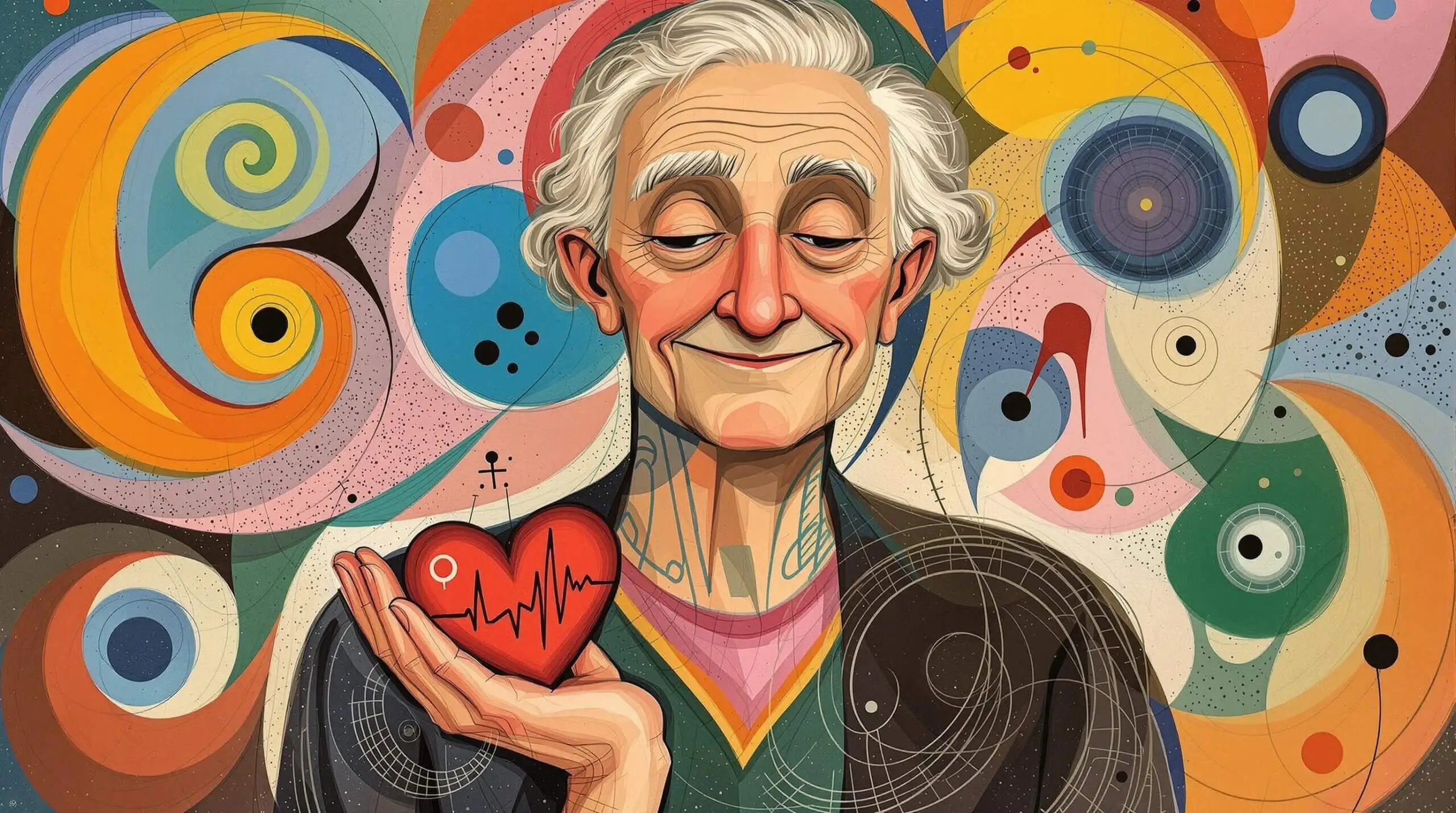The Pulse of Aging: Heart Rate Variability Unraveled
Explore how heart rate variability reveals insights into the aging process and its impact on cardiovascular health.

Understanding Heart Rate Variability and Its Impact on Aging
What is Heart Rate Variability?
Heart Rate Variability (HRV) measures the variation in time between consecutive heartbeats. While many think our hearts beat like metronomes, healthy hearts actually show subtle variations between beats. These microscopic differences tell us volumes about our overall health and, crucially, how well we’re aging.
The Science Behind HRV and Aging
Our nervous system constantly adjusts our heart rate in response to stress, exercise, emotions, and breathing. Higher HRV typically indicates better cardiovascular fitness and a more resilient stress response system. Lower HRV often signals chronic stress, poor sleep, or underlying health issues that can accelerate aging.
Origins and Evolution of HRV Research
Scientists first noticed HRV’s importance in the 1960s when monitoring fetal distress. By the 1980s, researchers discovered its remarkable ability to predict mortality after heart attacks. Today, HRV analysis has become a cornerstone of both clinical medicine and consumer health technology, offering insights into aging, stress management, and overall wellness.
Common Misconceptions About HRV
The biggest myth? That a perfectly regular heartbeat is ideal. Actually, some variation between beats is healthy and normal. Another misconception is that HRV remains constant throughout the day – it naturally fluctuates with your daily rhythms and activities. Understanding these patterns helps interpret HRV data accurately.
Statistics and Research Findings
Research shows that HRV typically decreases with age, dropping by roughly 3.6 milliseconds per decade. Studies have found that individuals with higher HRV tend to live longer and show fewer signs of biological aging. One landmark study followed 2,000 participants for 20 years, revealing that higher HRV correlated with a 30-40% reduction in mortality risk.

The Current Landscape of HRV Monitoring and Longevity
Modern Technology for Measuring HRV
Wearable devices now make HRV monitoring accessible to everyone. Smart watches, fitness trackers, and specialized devices can track HRV continuously, providing real-time feedback about stress levels and recovery status. This technology has revolutionized how we understand our body’s response to different lifestyle factors.
The Role of HRV in Personal Health Management
HRV has become a vital tool for optimizing health and longevity. Athletes use it to prevent overtraining, while health enthusiasts track it to gauge the effectiveness of their wellness practices. Medical professionals increasingly use HRV to monitor patients’ cardiovascular health and stress responses.
Exploring HRV’s Connection to Longevity: Mechanisms and Implications
The Autonomic Nervous System Connection
HRV reflects the balance between our sympathetic (“fight or flight”) and parasympathetic (“rest and digest”) nervous systems. This balance becomes crucial as we age. Better autonomic function, indicated by higher HRV, supports cellular repair, immune function, and other vital processes that influence longevity.
Inflammation and Cellular Aging
Low HRV often indicates chronic inflammation, a major driver of aging. Studies show that individuals with higher HRV have lower levels of inflammatory markers in their blood. This connection explains why HRV might serve as an early warning system for age-related diseases.
Sleep Quality and Recovery
HRV provides valuable insights into sleep quality – a critical factor in aging well. Higher nighttime HRV typically indicates better sleep and more effective recovery. Poor sleep patterns, reflected in lower HRV, can accelerate cellular aging and increase disease risk.
Stress Response and Resilience
Your HRV response to stress offers clues about your biological age and overall resilience. People with higher HRV generally handle stress better and show slower aging markers. This relationship highlights why stress management becomes increasingly important as we age.
Practical Strategies to Improve HRV and Support Healthy Aging
- Practice slow, controlled breathing exercises daily
- Maintain consistent sleep and wake times
- Exercise regularly, but avoid overtraining
- Stay well-hydrated throughout the day
- Minimize alcohol consumption
- Practice stress-reduction techniques
- Maintain a balanced, nutrient-rich diet
- Monitor and manage blood pressure
- Get regular exposure to natural light
- Take regular breaks during work hours
Optimizing HRV Through Lifestyle Changes
Exercise and Physical Activity
Regular physical activity improves HRV, but intensity matters. Moderate exercise typically enhances HRV, while excessive training can temporarily lower it. The key is finding the right balance and allowing adequate recovery time between intense workouts.
Nutrition and Diet
Certain foods and eating patterns affect HRV. Mediterranean-style diets, rich in omega-3 fatty acids, have shown positive effects on HRV. Avoiding large meals close to bedtime and maintaining stable blood sugar levels also support healthy HRV patterns.
Breathing Techniques and Meditation
Controlled breathing exercises can significantly improve HRV. Research shows that practicing slow breathing (about 6 breaths per minute) for just 5-10 minutes daily can enhance HRV and reduce stress levels. Regular meditation shows similar benefits.
Advanced Concepts in HRV and Longevity
Chronological vs. Biological Age
HRV provides insights into biological age – how old your body actually is versus your chronological age. Research indicates that people with higher HRV often have biological ages younger than their chronological age, suggesting better overall health and potential longevity.
Genetic Factors and HRV
While genetics influence baseline HRV, lifestyle factors play a larger role in day-to-day variations. Understanding your genetic predisposition can help create more effective strategies for improving HRV and supporting healthy aging.
Future Directions in HRV Research
Scientists are developing more sophisticated ways to analyze HRV data. Artificial intelligence and machine learning now help identify subtle patterns that might predict health issues before they become serious. Research continues into how HRV might guide personalized interventions for aging and disease prevention.
The relationship between HRV and aging opens new possibilities for monitoring and improving health span. As technology advances and our understanding deepens, HRV remains a powerful tool for anyone interested in aging well. By monitoring and actively working to improve HRV through lifestyle modifications, we can better support our body’s natural ability to maintain health and resilience as we age.